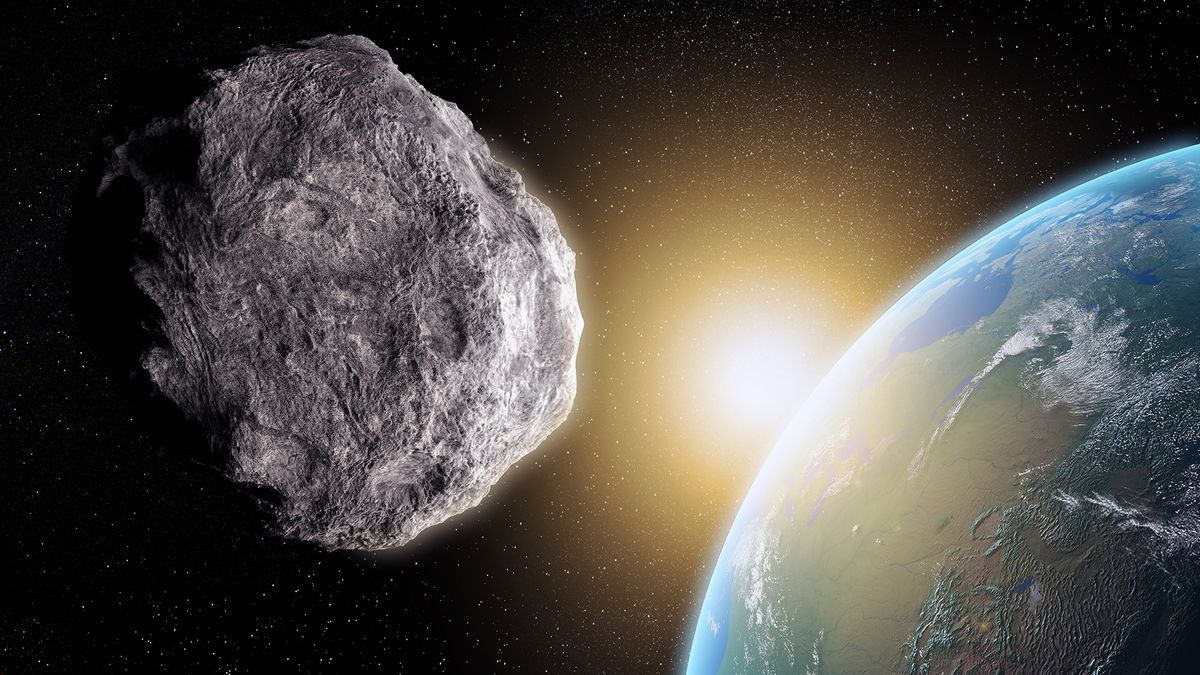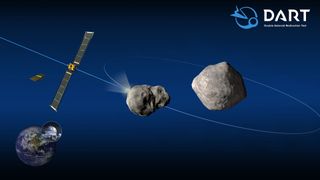An asteroid barely missed Earth last week, and no one knew it was coming
The space rock was a cosmic visitor that no one expected.

An asteroid about the size of a refrigerator shot past Earth last week, and astronomers didn't know the object existed until hours after it was gone.
It was a close call (from a cosmic perspective); the space rock's trajectory on Oct. 24 carried it over Antarctica within 1,800 miles (3,000 kilometers) of Earth — closer than some satellites — making it the third-closest asteroid to approach the planet without actually hitting it, CNET reported.
Scientists were unaware of the object, dubbed Asteroid 2021 UA1, because it approached Earth's daytime side from the direction of the sun, so the comparatively dim and small visitor went undetected until about 4 hours after passing by at its closest point, according to CNET.
Related: Top 10 ways to destroy Earth
But with a diameter of just 6.6 feet (2 meters), UA1 was too small to pose a threat. Even if it had struck Earth, most of its rocky body would have burned away in the atmosphere before it could hit the ground, CNET reported.
Comets and asteroids that orbit within our cosmic neighborhood, approaching Earth within 1.3 astronomical units (120.9 million miles, or 194.5 million kilometers) are known as near-Earth objects (NEOs), according to NASA's Center for Near-Earth Object Studies (CNEOS). NASA uses telescopes on the ground and in space to find and monitor NEOs; to track their orbits and identify their size, shape and composition; and to pinpoint potentially hazardous objects, managing these efforts through the agency's Planetary Defense Coordination Office.
For an object to be considered dangerous, it has to measure at least 460 feet (140 m) in diameter, NASA says. UA1 may not have been big enough to threaten the planet, but what about bigger asteroids that might be headed our way? NASA is also investigating defensive technologies for protecting Earth from possible collisions with larger space rocks, through deflection.
Sign up for the Live Science daily newsletter now
Get the world’s most fascinating discoveries delivered straight to your inbox.
The Double Asteroid Redirection Test (DART), scheduled to launch Nov. 24, will test a method for diverting asteroids by hitting them with high-speed remote-controlled spaceships, NASA representatives said in a statement. Scientists will send the DART spacecraft hurtling into the near-Earth binary asteroid Didymos, which is shaped like a spinning top and has two bodies; the bigger one measures about 2,600 feet (780 m) in diameter, and its smaller moonlet measures around 520 feet (160 m) in diameter.

Didymos came closest to Earth in 2003, skimming it at a distance of approximately 4.5 million miles (7.18 million km), but it typically circles the sun just outside Earth's orbital path, according to NASA. While Didymos doesn't threaten Earth, it's just about the right size to test if the collision can nudge a hazardous NEO enough to divert it from a collision course with Earth, according to the statement.
Still, to divert an asteroid, NASA would need to detect it before it hit Earth. That's why another mission, NEO Surveyor, is developing an infrared space telescope that could improve the chances of spying sneaky asteroids such as UA1 that approach from behind the sun, according to the University of Arizona's Lunar and Planetary Laboratory, which is collaborating with NASA on the project.
To date, NASA has identified approximately 27,000 NEOs, of which about 9,800 measure at least 459 feet (140 m) in diameter and 890 measure 0.6 mile (1 km) in diameter, according to the CNEOS.
While UA1 may have been a relative pip-squeak, other asteroids zooming by Earth on Nov. 2 are significantly bigger, according to NASA Jet Propulsion Laboratory's Asteroid Watch. Those five space rocks range in diameter from 56 feet (17 m), or about the length of a house, to an airplane-size 170 feet (52 m).
Luckily, none of these space rocks will come within 515,000 miles (829,000 km) of Earth, NASA says.
Originally published on Live Science.

Mindy Weisberger is an editor at Scholastic and a former Live Science channel editor and senior writer. She has reported on general science, covering climate change, paleontology, biology and space. Mindy studied film at Columbia University; prior to Live Science she produced, wrote and directed media for the American Museum of Natural History in New York City. Her videos about dinosaurs, astrophysics, biodiversity and evolution appear in museums and science centers worldwide, earning awards such as the CINE Golden Eagle and the Communicator Award of Excellence. Her writing has also appeared in Scientific American, The Washington Post and How It Works Magazine. Her book "Rise of the Zombie Bugs: The Surprising Science of Parasitic Mind Control" will be published in spring 2025 by Johns Hopkins University Press.











